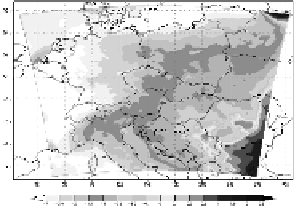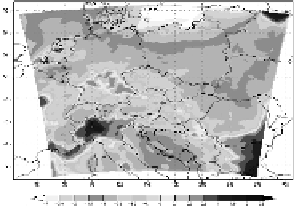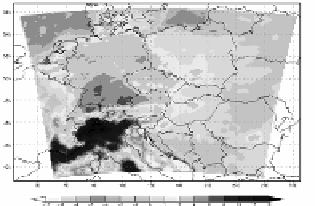Environmental Engineering Reference
In-Depth Information
2. Settings and Results
Meteorological fields generated by RegCM drive CAMx transport and dry/wet
deposition. Briefly, a preprocessor utility was developed which takes RegCM's
outputs and convert them to fields and formats accepted by CAMx. There are
problems with the anthropogenic emission inventories available, at this stage
emissions from EMEP 50 × 50 km database are interpolated. Biogenic emissions
of isopren and monoterpenes are calculated as a function of 2 m temperature,
global radiation and land-use by Guenther et al. (1993, 1994). We use 23 vertical
-levels reaching up to 70 hPa at 10 km of resolution for RegCM configuration,
the same horizontal grid for CAMx. Initial and boundary conditions are taken from
σ
50 km resolution run for whole Europe by Krueger et al. (2008) or Katragkou
et al. (2009). In our setting CB-IV chemistry mechanism is used (Gery et al., 1989).
As the first step, the distribution of pollutants is simulated off-line for four time
slices of 10 years in the model couple. Period of 1991-2000 driven by reanalysis
ERA40 is used for validation whereas control run 1991-2000 driven by global
model ECHAM5 is used for comparison and estimate of systematic error imposed
by GCM, future time slices 2041-2050 and 2091-2100 provide the information on
climate change impact on future air quality.
Fig. 1.
Climate change impact on summer season ozone concentration (in ppbv) in terms of the
difference for 2041-2050 period (left panel) and 2091-2100 period (right panel) against the
control period 1991-2000
Fig. 2.
Climate change impact on number of days with 8-h ozone concentration above the
threshold of 120 μg in terms of the difference for 2041-2050 period (left panel) and 2091-2100
period (right panel) against the control period 1991-2000




